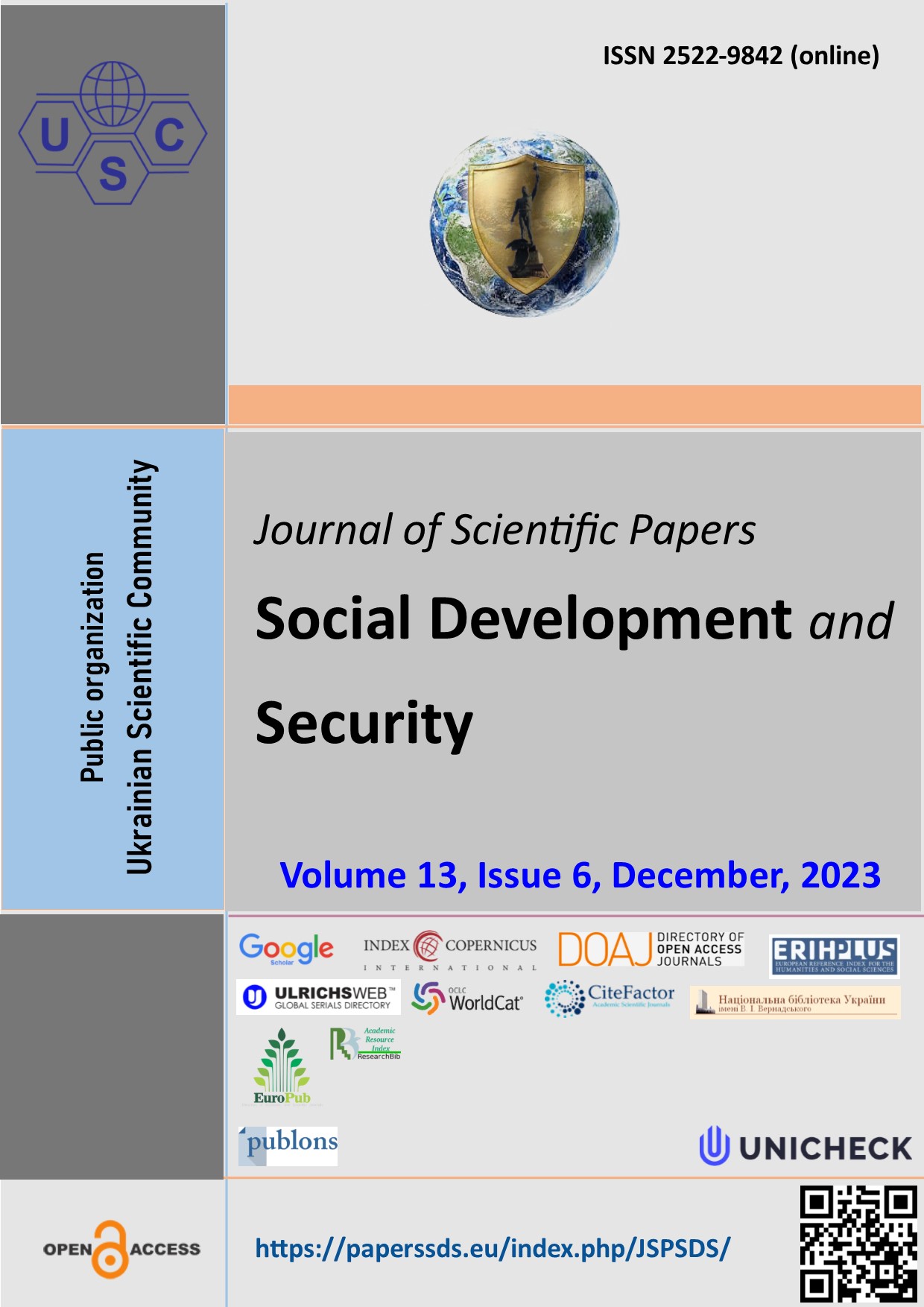Comparison of distribution laws (failure models) for describing the processes occurring in the mathematical model of exploitation (storage) of weapons at the "use" and "maintenance" stages of the life cycle
Abstract
Purpose: to investigate the influence of parameters of failure models on the indicator of maintenance efficiency. This study can be used by production managers and scientific personnel when choosing a failure model for conducting their own research in the field of armaments and military equipment.
Method: he main research methods are: statistical analysis, numerical method, comparative analysis.
Findings: the proposed recommendations for choosing a failure model allow you to justify the choice of a distribution law and different from the known ones, based on the study of the influence of distribution laws on the complex reliability indicator of the coefficient of technical use, which allows you to justify the feasibility of using diffusion laws of distribution as a model of failures of the corresponding samples of single-use weapons, which contain various components, namely: radio-electronic, electro-mechanical, hydraulic and rubber-technical.
Theoretical implications: the work presents a method of comparing distribution laws (failure models) to describe the processes occurring in the mathematical model of operation (storage) of weapons at the "use" and "maintenance" stages of the life cycle. At the same time, a semi-Markov random process is used to describe the processes occurring in the mathematical model. The coefficient of technical use was chosen as a comprehensive indicator of the reliability of the technical operation of aviation means of destruction, and the efficiency criteria were also determined. The performed calculations indicate the superiority of diffusion laws over exponential laws, which in turn increases the accuracy of further calculations using diffusion distributions.
Paper type: scientific and practical.
Downloads
References
Nadiynistʹ tekhniky. Modeli vidmov. Osnovni polozhennya: DSTU 3433-96. – Kyiv: Derzhspozhyv standart Ukrayiny, 1996. – 42 s. – (Natsionalʹnyy standart Ukrayiny).
Pʺyavchuk, O.O. (2022). Matematychna modelʹ zberihannya aviatsiynykh zasobiv urazhennya iz zastosuvannyam dyfuziyno-nemonotonnoho rozpodilu yikh vidmov / O.O. Pʺyavchuk, P.V. Openʹko, P.M. Yablonsʹkyy, V.P. Dyptan // naukovyy zhurnal “Chestʹ i zakon”, vypusk KH.: NANHU, 2022, №3 (82), S. 99 – 107.
Hertsbakh, Y.B. (1969). Modely profylaktyky / Y.B. Hertsbakh // Sovet·skoe radyo. – Moscow, 1969. – 214 s.
Mirnenko V.I. (2015). Porivnyannya efektyvnosti tekhnichnoho obsluhovuvannya vyrobiv aviatsiynoyi tekhniky, shcho ekspluatuyutʹsya za tekhnichnym stanom, dlya modeley dyfuziyno-monotonnoho i dyfuziyno-nemonotonnoho rozpodiliv vidmov / [V.I. Mirnenko, P.M. Yablonsʹkyy, S.O. Pustovyy, O.V. Avramenko] – Kyiv: NUOU, Suchasni informatsiyni tekhnolohiyi u sferi bezpeky ta oborony, 2015. – № 2 (23) – s. 88-93.
Kitik S.V., Mirnenko V.I., Yablonsʹkyy P.M. (2019). Zastosuvannya dyfuziyno-nemonotonnoho rozpodilu dlya modelyuvannya protsesu ekspluatatsiyi radioelektronnoyi tekhniky // Journal of Scientific Papers: Social development & Security: elektronne naukove fakhove vydannya. HO “Ukrayinsʹka naukova spilʹnota”. – Kyiv. – 2019. – Vyp. 9(6). – S. 102-111
Openʹko P.V., Pʺyavchuk O.O., Yablonsʹkyy P.M., Myronyuk M.YU., Kozyr A.H. (2022). Matematychna modelʹ tekhnichnoho obsluhovuvannya zrazkiv ozbroyennya ta viysʹkovoyi tekhniky z vykorystannyam rozpodilu chasu bezvidmovnoyi roboty vyrobiv u vyhlyadi zakonu Veybulla DNDI VS OVT, m. Chernihiv. Zbirnyk naukovykh pratsʹ Derzhavnoho naukovo-doslidnoho instytutu vyprobuvanʹ i sertyfikatsiyi ozbroyennya ta viysʹkovoyi tekhniky / DNDI VS OVT. – Chernihiv: Yevenok O.O., 2022. – Vyp. № 2(12). – 93-108– ISSN 2706-7386
Abstract views: 196 PDF Downloads: 178
Copyright (c) 2023 Tymur Kurtseitov, Serhiy Kopashynskii, Petro Yablonskyi

This work is licensed under a Creative Commons Attribution 4.0 International License.
The authors agree with the following conditions:
1. Authors retain copyright and grant the journal right of first publication (Download agreement) with the work simultaneously licensed under a Creative Commons Attribution License that allows others to share the work with an acknowledgment of the work's authorship and initial publication in this journal.
2. Authors have the right to complete individual additional agreements for the non-exclusive spreading of the journal’s published version of the work (for example, to post work in the electronic repository of the institution or to publish it as part of a monograph), with the reference to the first publication of the work in this journal.
3. Journal’s politics allows and encourages the placement on the Internet (for example, in the repositories of institutions, personal websites, SSRN, ResearchGate, MPRA, SSOAR, etc.) manuscript of the work by the authors, before and during the process of viewing it by this journal, because it can lead to a productive research discussion and positively affect the efficiency and dynamics of citing the published work (see The Effect of Open Access).
















